Guest Post by Leah Harris from AnatomyofaSketch.com
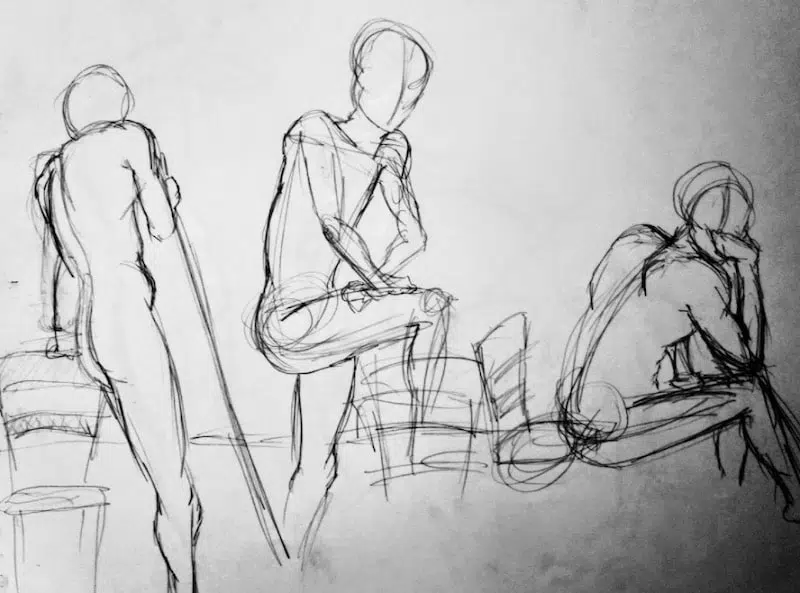
What is Form Drawing?
Form drawing is the study and repetition of drawing symbols, shapes, or figures.
When practicing form drawing, you can practice drawing shapes like blocks, triangles or trapezoids, or patterns like zig zags, Zentangles, and swirls.
Form drawing can also mean the repetition of drawing the human form.
When it comes to human form drawing, this repetition is perfect for helping us to capture movement, form, and volume. With human form drawing, there is no need to be precise, because it’s all practice.
For this tutorial I will teach you the 5 of my favorite ways to practice form drawing, and how to get better at it with time.
5 Form Drawing Exercises to Get you Started
Let’s look at some drawing exercises that will help you with your form drawings:
1. Use Form Drawing as a warm up
Set aside some time to warm up with form drawing, before drawing.
Warming up with some doodles, drawing shapes and motion can help you get out some motion before sitting down to draw.
This can be any shape or form.
Don’t worry so much about making it perfect, but make the goal to free up mental space by drawing.
I try to sketch for 10-15 minutes before working on any projects.
2. Practice with shapes
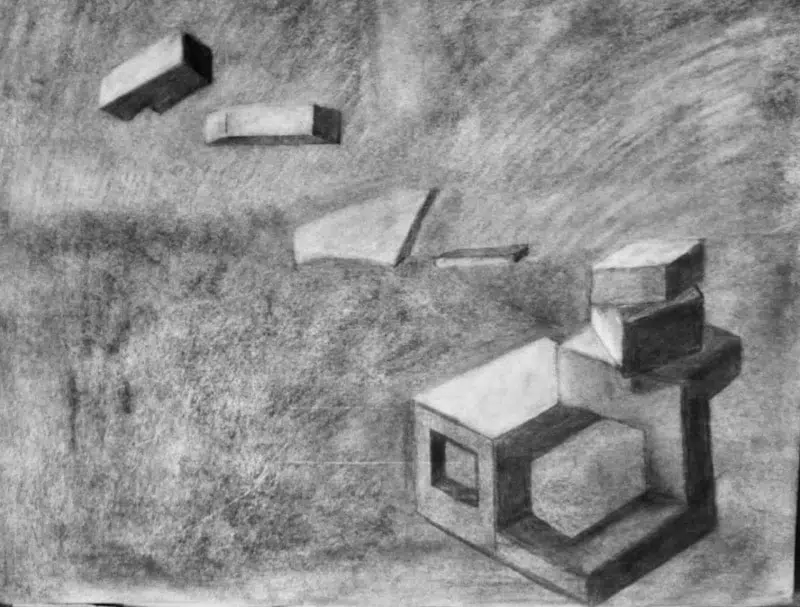
Everything is a shape.
You might not have thought about this, but practicing drawing shapes is a great way to prepare for drawing people!
Especially shapes like cylinders, circles, and rectangles.
For this exercise, practice drawing any shape you want over and over for about five minutes. Get creative with it, connecting the shapes, practicing shading, and drawing whatever you feel like.
Drawing shapes in 3D form is also a great way to practice depth!
Remember that repetition is key when practicing form drawings of any kind.
3. Quick Draw Slideshow
Something we did in one of my college drawing classes was quick form drawing with a slideshow. The goal was to quickly draw as many forms as you could before the slideshow ran out.
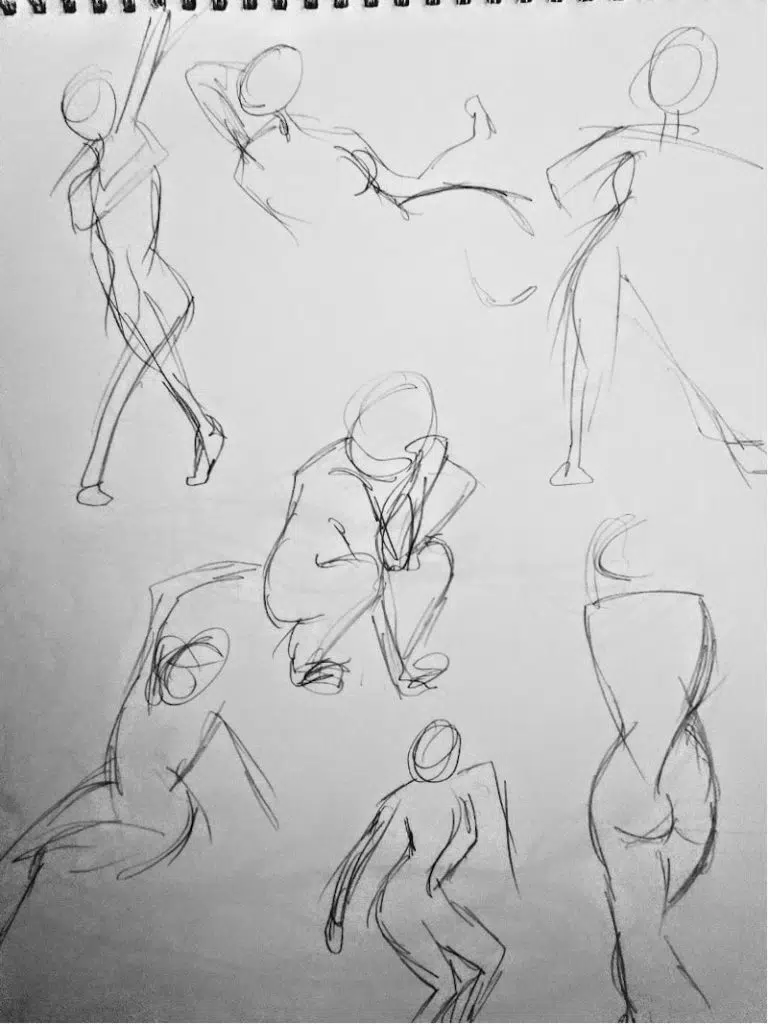
How this worked was my teacher set up a slideshow of images of people in movement on the projector, and set each image to a 5-10 second timer. That was all the time we had to try to capture the movement on the paper.
This forced us to forget about being perfectionists, and just draw.
There was no time to “draw” the person in the image and make it look like them. And that was the point.
The point was to draw the shape and the movement of the person in the image.
To help you practice, here is a video of 1-5 minute poses (non-nude) that you can do to help you practice. Remember to start drawing the next pose as soon as the timer runs out!
4. Draw from Life
Another great way to practice is drawing from life.
These images below were drawn by me with a live model. Like the exercise above, the model changed poses every 60 seconds.
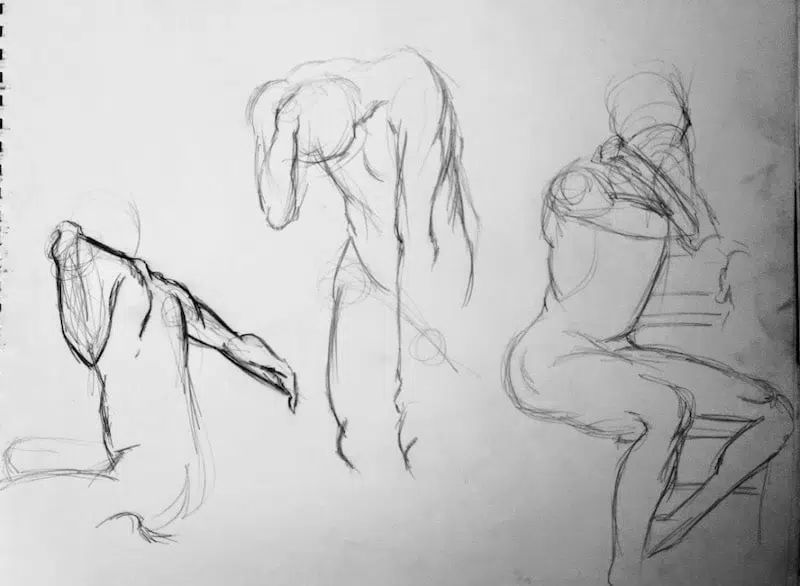
For this exercise, you can ask someone you know to stand in different poses for you. If you have pets, you can also try drawing them.
You can also practice drawing objects in your home. These could be anything from a water bottle, to a coffee mug, pillow, the couch, a box of tissues, etc.
Anything you can think of!
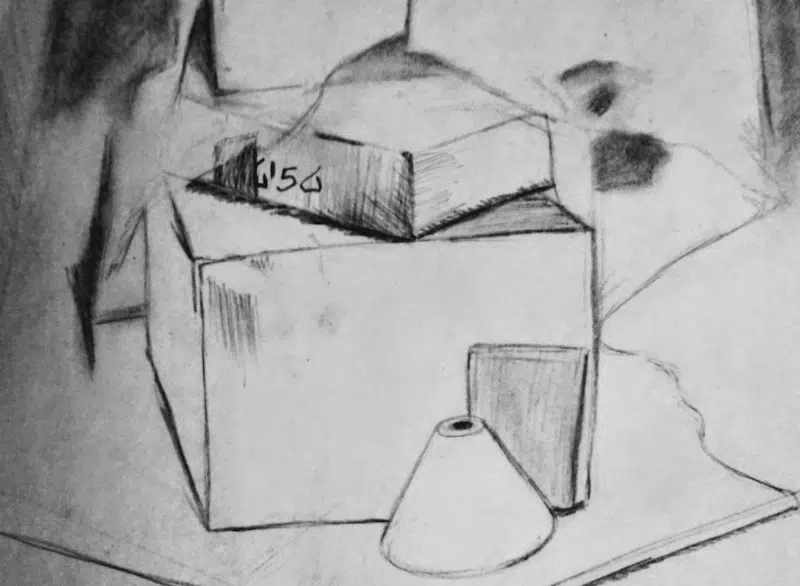
Drawing from life is different from drawing from a reference photo because you can see the shape of the person or thing in front of you, and see how the light and shadows hit the subject as well.
5. Draw Patterns
Symbols and patterns are what a lot of people think of when they think of form drawing.
Drawing patterns and shapes helps the brain to engage, and can help you improve your skills for drawing abstracts. Doodling and sketching can also help you to get past any creative blocks that may be holding you back.
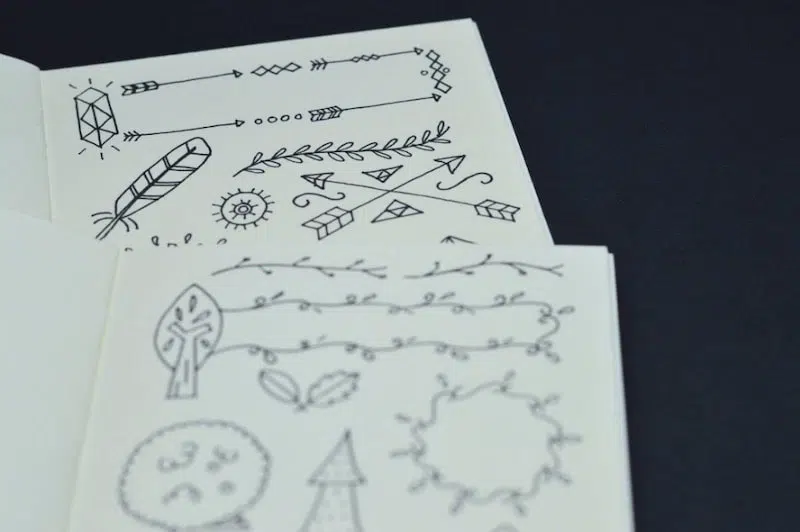
Another fun form of practicing pattern drawing is with Zentangles.
This is another thing I learned in college, and we used it as a warmup every now and then.
Zentangles are beautiful designs that start by creating a square with a border, and drawing simple designs over and over inside.
You can watch the quick video below to learn how to do a Zentangle.
Some Quick Tips for Form Drawing Practice
Study Anatomy & Proportions
Knowing basic anatomy and proportions can help greatly when doing form drawings.
Learning basic proportions will help you to make your characters look more realistic, and make your images feel more balanced.
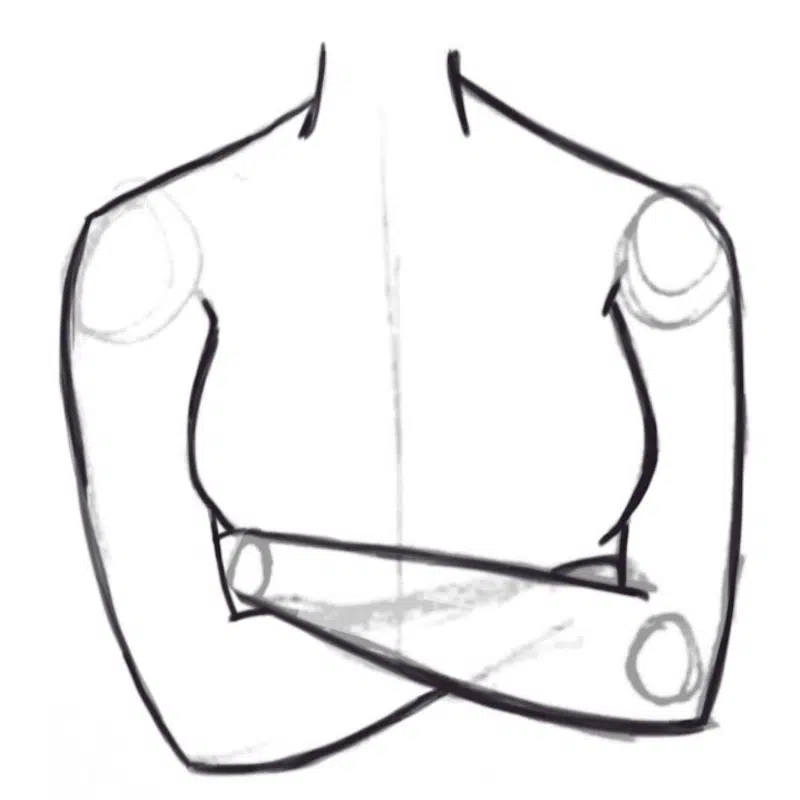
Sometimes when a picture looks off, or doesn’t look as good as we initially envisioned, it’s because one or more proportions are off.
Take some time to become familiar with proportion.
I have a lot of lessons teaching the proportions of the human body at anatomyofasketch.com
Forget the Rules
When you are practicing form drawing, try breaking the rules.
Creativity doesn’t come in a neat and tidy box, but from splashing around, coloring outside the lines, and expressing yourself fully.
So learn the rules, and then decide when to break them.
Process vs. Product
Form drawing is really more about the process of drawing, rather than the finished product or piece of art.
It’s all about expression and practice.
Don’t worry about the end product or what your image will look like when you’re finished. With some of these exercises, the image won’t be “finished” once you are done with it anyways.
Enjoy the experience, and practice, practice, practice.
Follow Me

Thank you for reading this post on form drawing, and following along till the end.
If you liked this article, you can see more from me on my website, AnatomyofaSketch.com, and you can also follow me on Instagram @anatomyofasketch to see more of my artwork.
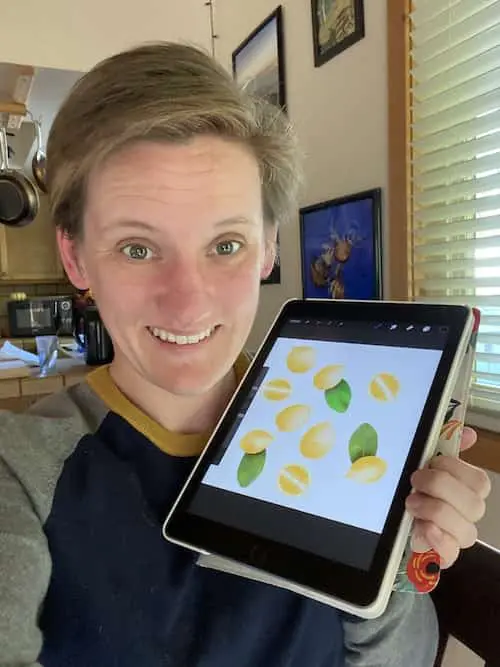
Diana has been an artist for over 27 years and has training in drawing, painting, digital drawing and graphic design. Diana’s latest obsession is digitally drawing with Procreate and Procreate Dreams. Diana has experience selling her art across a number of platforms and loves helping other artists learn how to make money from their art as well.
